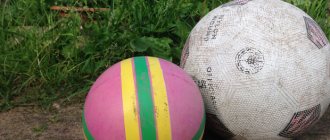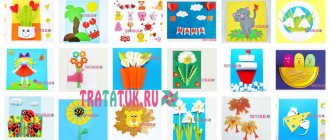Duty schedule: how to create
To maintain order and discipline, the teacher needs to think about how to introduce a duty schedule in kindergarten. This measure will help to count and take into account all the merits of the student and not get confused in the order. Such a schedule may look different, depending on the creative approach of the teacher. It is desirable that the pupils themselves take part in creating the duty corner. In this case, there will be a feeling of ownership of the innovation. Do-it-yourself work for duty can serve as an excellent start for uniting a children's team. In addition, each child will be able to put his own vision and show imagination, which is so necessary for creating a duty corner in kindergarten with his own hands.
Benefits of being on duty
Thanks to duty, the child begins to bear responsibility for the assignment. Even if the task is quite simple, being on duty in a kindergarten will develop a love of work. After all, the baby will be very pleased when, thanks to his own efforts, it becomes, for example, cleaner.
Based on such life experience, the child will subsequently perform duty tasks with greater concentration and dedication.
File of work orders
File of work orders
for children of senior preschool age
Task No. 1
"Watering indoor plants."
Goal: to expand children’s knowledge about the needs of plants for light and moisture, to teach how to recognize moisture-loving and drought-resistant, light-loving and shade-tolerant plants by their leaves. Develop accuracy when working with water and plants, confidence in your actions, work skills. Foster a caring attitude towards the natural environment and a desire to take care of it.
Task No. 2
"Washing houseplants."
Goal: to give children an idea of the methods of watering (in a tray, under the leaves) and the rules (do not flood, water evenly); cultivate a desire to care for plants. Invite children to help as much as possible, clarify children’s ideas about indoor plants.
Task No. 3
“Spraying indoor plants with water from a spray bottle.”
Goal: teach a new work skill; reinforce children’s understanding that leaves also need moisture; cultivate a caring attitude towards plants. Teach children to independently determine the need for watering (by the color and condition of the soil, by the appearance of the plant), and remind them of the watering technique.
Task No. 4
“Green landing on indoor plants”
(remove diseased leaves, fertilize).
Goal: to teach children to determine by the condition of indoor plants what actions are necessary to care for them (watering, cleaning, loosening, fertilizing), to correctly perform the corresponding labor operations, and invite the children to tell about the purpose of each of them.
Task No. 5
"Taking care of plants."
Goal: to clarify previously acquired knowledge about ways to keep plants clean, to teach children how to choose a method for removing dust from a plant, focusing on the features of its appearance and structure.
Task No. 6
"Loosening the soil of indoor plants."
Goal: teach children to care for indoor plants; give children knowledge about why it is necessary to loosen the soil of plants; consolidate loosening techniques and rules for using the necessary items for this. Develop labor skills, accuracy. Foster an ecological culture and respect for the environment.
Task No. 7
"Feeding plants."
Goal: to tell children about the need to feed plants, based on children’s knowledge that the source of nutrition for plants is the soil, and that gradually, by giving up nutrients to plants, the soil is depleted. Show how to fertilize plants.
Task No. 8
"Washing pallets."
Goal: to teach children to do work independently and responsibly, distribute responsibilities, and coordinate actions.
Task No. 9
"Transplanting indoor plants."
Goal: to expand children’s understanding of the labor involved in caring for plants of various types: to learn how to replant indoor plants. Introduce children to the sequence and technique of work, the rules of personal hygiene, and offer to provide all possible assistance to the teacher.
Task No. 10
"Planting onions."
Goal: to teach children to set a goal, prepare a workplace, tools and clean up after themselves. To consolidate children's knowledge about the structure of the onion and the conditions necessary for onion growth. Develop labor skills and habits, accuracy when working with land, water and plants. Foster an environmental culture, a desire to achieve results, and participate in a common cause.
Task No. 11
"Planting pea seeds."
Goal: invite children to tell how a plant grows from a seed, clarify and supplement the children’s answers. To update and specify ideas about the conditions necessary for the growth of peas.
Task No. 12
"Sowing seeds of flowers and vegetables."
Goal: to give children knowledge that every plant has seeds. Learn the sequence of actions required when sowing seeds: make a hole in the ground (to sow seeds, each time marking the distance between them and the grooves with a stick); teach to observe cultural and hygienic skills when working. To consolidate children's knowledge about at what time, which seeds are sown in boxes in a group for preparing seedlings, and which seeds are sown in open ground. Develop labor skills and abilities. Foster an ecological culture, a caring attitude towards the natural environment, and a desire to take care of it.
Task No. 13
“Planting seedlings, caring for them.”
Goal: to form children’s ideas about the main stages of plant growth and development (seed, seedling, stem with leaves); about the basic methods of growing plants and caring for them (planting in loose soil, watering, loosening the soil, weeding, feeding). Be careful when planting seedlings, as the plants are very fragile. Develop labor skills and habits, accuracy when working with land, water and plants. Foster an ecological culture, a caring attitude towards the natural environment, and a desire to take care of it.
Task No. 14
"Dining duty."
Goal: to teach children to independently and conscientiously perform the duties of a duty officer. Wash your hands thoroughly, put on the duty officer's clothes, and set the table correctly. Clear dishes after meals. Develop labor skills and abilities, the ability to see disorder in the table setting. Cultivate a desire to work for the benefit of others.
Task No. 15
“Duty in the educational activity zone” Purpose: independently and conscientiously perform the duties of the duty officer: lay out materials and aids prepared by the teacher for the lesson on tables; wash, if necessary, put them back in place after class.
Task No. 16
“We will prepare equipment and materials for educational activities.” Goal: to develop a sense of responsibility for the assigned task, to teach children to carefully lay out materials and equipment for educational activities.
Task No. 17
Remove plasticine and modeling boards.
Goal: to develop teamwork skills
Task No. 18
“Learning to make our beds.”
Goal: to bring to the awareness of children how to properly make the bed; cultivate independence, accuracy, and the desire to help adults. Foster a responsible attitude towards self-care work and independence.
Task No. 19
“Assisting the junior teacher in laying out bedding on the beds.”
Goal: to teach how to sort bed linen according to their belongings, to cultivate a desire to help the junior teacher and respect for other people’s work. Cultivate a desire to work, a sense of responsibility for the assigned work.
Task No. 20
"Changing dirty towels."
Goal: maintain a steady interest in work, the desire to diligently complete the assignment. Learn to hang a towel in an individual compartment. Foster a desire to work and help adults.
Task No. 21
"Order in the dressing room closet"
(together with the junior teacher)
Goal: to teach children to maintain order in their personal wardrobes: empty the closet of clothes and shoes, wipe the shelves with a damp cloth, and neatly put the clothes back in place. Develop diligence, the ability to see disorder, and accuracy when working with water. Cultivate a desire to work in a team environment.
Task No. 21
"Washing chairs."
Goal: to teach children to help the junior teacher, to keep the chairs in the group room tidy and clean: wipe them with a damp cloth; put in place. Develop labor skills and abilities, the ability to comply with cultural and hygienic requirements when working. Cultivate a desire to help adults and respect for their work.
Task No. 22
"Washing building materials."
Goal: to teach how to wash, dry and lay building materials, to teach children to constantly and promptly maintain order in the play corner, to wash building materials with a soapy solution prepared by the teacher, to rinse and dry them; observe the rules of personal hygiene.
Task No. 23 Wet cleaning of modules for construction.
Goal: to develop teamwork skills.
Task No. 24
“We wipe the dust off the shelves for games and toys.”
Goal: continue to teach children to wipe dust from shelves with a damp cloth. Develop labor skills and abilities. To cultivate aesthetic taste and the desire to work for the benefit of others.
Task No. 25
“Cleaning up order in the group after the game.”
Goal: to form in children a conscious desire for order, the habit of putting away toys after playing. Improve the ability to draw up a work plan and select the necessary materials for upcoming activities.
Task No. 26
"Order in toys"
Goal: to teach children to put on work aprons before starting work; keep toys in order: wash, dry, wipe and put in place. Develop hard work and the ability to see disorder; be careful when working with water. Cultivate respect for your own work and the work of others.
Task No. 27
"Washing dolls."
Goal: to teach children to help the teacher in washing dolls: rinse soaked dolls, clean them with brushes. Develop diligence, the ability to see disorder, and accuracy when working with water. Cultivate a desire to help adults and respect for their work.
Task No. 28
Maintain the appearance of the dolls: select clothes, comb, tie a bow.
Goal: to foster a sense of satisfaction from the work done.
Task No. 29
"Washing doll clothes."
Goal: to teach children to help the teacher in washing doll clothes and bedding. Teach children to put on work aprons before starting work; prepare the necessary supplies for washing and drying, as well as a workplace; know how to use soap. Develop labor skills and abilities, the ability to comply with cultural and hygienic requirements when working. Cultivate a desire to work for the benefit of others.
Task No. 30
“Washing napkins used for visual arts.”
Goal: to teach children the skills of soaping, rinsing and wringing out napkins, to continue to form a work culture (tidiness in the process of work).
Task No. 31
"Keeping your manual closet tidy." Goal: to teach children to organize manuals on their own, maintain order in closets, and wipe dust.
Task No. 32 “Wipe the window sills with a damp rag in the group room and bedroom.” Goal: to teach children to follow the following rules when working with water: roll up their sleeves, wet a cloth and wring it dry, and rinse it in water when it gets dirty. Task No. 33
"Cleaning up building materials." Goal: to teach how to wash, dry and lay building materials, to teach children to constantly and promptly maintain order in the play area, to wash building materials with a soapy solution prepared by the teacher, to rinse and dry them; observe the rules of personal hygiene. Task No. 34
"Cleaning the play area." Goal: to teach children to put on work aprons before starting work; keep toys in order, wash them, dry them, wipe them and put them in place.
Task No. 35 “Let’s arrange the chairs in a certain order.” Goal: continue to develop work skills; carry out the assignment carefully, quickly, diligently.
Task No. 36 “Repairing boxes for waste material.” Goal: to consolidate technical skills in working with scissors and glue, cultivate frugality, and the ability to work collectively.
Task No. 37
"Work in the book corner."
(restoration of books).
Goal: to teach children to select books that need repair, carefully glue them (use glue and scissors correctly, use napkins). Cultivate a caring attitude towards books, a desire to work, and maintain order.
Task No. 38
“Work in the book corner: we help repair books from the library of the junior group.”
Goal: invite children to help repair children's books. Cultivate a caring attitude toward books and mutual assistance. Develop and teach how to use book repair skills.
Task No. 39 “We have order in our closet.” Goal: to teach children to be careful when folding things in a coat closet.
Task No. 40
“General cleaning in the group room.”
Goal: invite children to carefully examine the group room and determine what needs to be done to put things in order; Together with the teacher, outline a work plan. Learn to organize joint work. Create responsibility for carrying out assignments.
How to organize a duty schedule?
Whatman paper can serve as the basis for organizing duty in kindergarten, creating a schedule and schedule. It is best to place photographs of the students on the sheet or assign each child his own symbol. This notation will be useful later. The line of duty can be arranged in alphabetical order of the children's surnames, if desired, or according to the principle of desks, the children at the first table are on duty first, and at the end of the month - the children at the last.
For good behavior, help and attentiveness, the child will receive a card at the end of duty. If, for example, the paper is red, it means that the child coped with his duties perfectly. If something didn’t work out during duty, the card may be a different color.
On whatman paper with your own kindergarten duty schedule, you can add small pockets under the photographs of the pupils, in which leaflets indicating the child’s achievements will be stored. Or you can do without photographs of children and put images of special symbols that would characterize the pupil directly into a special handbag.
For example, the duty officer chose a squirrel as his own symbol, and for successfully completed work, red cards with the image of a squirrel will appear in his pocket. This will mean that this particular student copes well with all tasks.
Thus, being on duty develops another trait in children - the ability to fantasize. After all, when creating a duty corner in a kindergarten with their own hands, students will be able to fully demonstrate their creative abilities, as well as when choosing a personal picture that will become a symbol of successful work.
Long-term planning of manual labor with older children
Week 4: Teamwork.
Theme: “Golden Autumn”.
Tasks:
Continue to teach children to use corrugated cardboard in their work.
To develop the ability to create plot compositions using various materials. Develop fine motor skills. Develop aesthetic perception. Cultivate perseverance, patience, and accuracy in work. Material:
Tinted sheet of A3 paper, strips.
November
Week 1: Team work.
Topic: “Flag of Russia.”
Tasks:
To develop in children the ability to work with napkins and glue.
Fix the colors of the Russian flag. Plan the progress of the work. Learn to place the image on the entire sheet. Develop fine motor skills. Cultivate interest in the activity. Materials:
cardboard, PVA glue, brushes. Napkins of white, blue, red colors, oilcloth.
Week 2: Topic: “A handkerchief doll.”
Tasks:
To develop children's ability to build a doll from a handkerchief.
Build independence and develop a sense of self-confidence. Foster independence. Develop hand motor skills. Material:
Handkerchief, cotton wool, thread.
Week 3: Topic: “Machine”.
Tasks:
Develop the ability to work with different materials (matchboxes).
Fix the rules for safe work with glue and scissors. Develop compositional skills. Cultivate the desire to finish what you start. Materials:
Colored paper, 3 matchboxes for each child, PVA glue, tassels, oilcloth.
Week 4: Topic: “Little Man”.
Tasks:
Teach the rules of safe work with acorns and matches. Develop compositional skills. Cultivate the desire to finish what you start. Develop imagination, fantasy, fine motor skills. Achieve accurate and high-quality work.
Material:
acorns, plasticine.
December
Week 1: Topic: “Rowan branch.”
Tasks:
To develop children’s ability to work with different materials (napkins) and plan their work.
Fix the signs of winter. Develop fine motor skills and perseverance. Cultivate the desire to finish what you start. Materials:
cardboard, stencil, white, red napkin, PVA glue, brush, oilcloth.
Week 2: Topic: “Bullfinch”.
Tasks:
To develop children’s ability to work with cereals and glue.
Plan the progress of the work. Strengthen the ability to place an image on the entire sheet. Develop fine motor skills. Cultivate interest in the activity. Materials:
cardboard, stencil, PVA glue, brush, painted millet, oilcloth.
Week 3: Topic: “Snowflake”.
Tasks:
Teach children to work with different materials (semolina) Teach safety rules for working with glue and cereals.
Learn to plan your work. Develop fine motor skills and perseverance. Cultivate the desire to finish what you start. Materials:
semolina, cardboard, stencil, PVA glue, brush, oilcloth.




